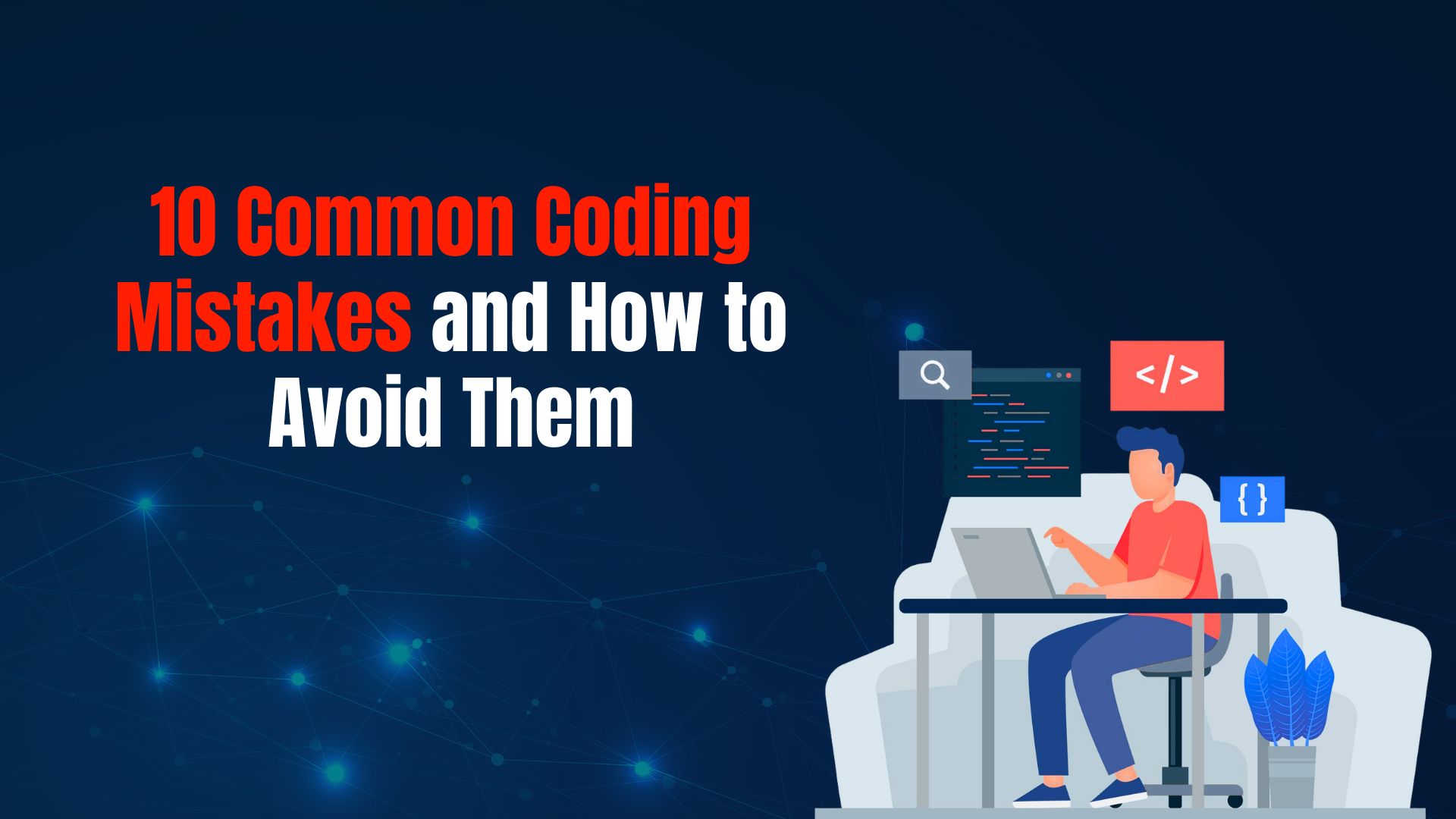29Jun

Coding is both an art and a science. As developers, we constantly aim to write clean, efficient, and bug-free code. But no matter how experienced we are, Common Coding Mistakes can creep in—impacting performance, scalability, and maintainability. Whether you’re a beginner or a seasoned programmer, recognizing and avoiding these Common Coding Mistakes can save hours of debugging and frustration. In this blog, we’ll explore the 10 most common coding mistakes developers make—and provide practical tips on how to avoid them.

The Mistake:
One of the biggest rookie (and sometimes expert) mistakes is writing code that only the author can understand. Poor naming conventions, lack of indentation, and convoluted logic make the code difficult to read and maintain.
Why It’s a Problem:
Unreadable code slows down team collaboration, increases technical debt, and makes debugging harder.
How to Avoid It:
The Mistake:
Assuming everything will go as planned and not implementing error handling or exception management.
Why It’s a Problem:
Uncaught exceptions can crash applications, expose security vulnerabilities, or result in poor user experiences.
How to Avoid It:
The Mistake:
Embedding fixed values directly into your code (like file paths, URLs, or API keys).
Why It’s a Problem:
Hardcoded values reduce flexibility and make future updates error-prone. They also pose security risks.
How to Avoid It:
The Mistake:
Working without Git or committing large chunks of code without meaningful messages or branches.
Why It’s a Problem:
Lack of version control leads to poor collaboration, difficulty in debugging, and potential data loss.
How to Avoid It:
The Mistake:
Writing your own version of a function or module that already exists in the standard library or well-tested libraries.
Why It’s a Problem:
Rewriting core functionalities can introduce bugs and inefficiencies.
How to Avoid It:
The Mistake:
Skipping tests to save time or writing code without considering edge cases.
Why It’s a Problem:
Lack of testing leads to bugs in production, poor user experience, and increased maintenance time.
How to Avoid It:
The Mistake:
Building overly complex solutions for simple problems, anticipating future requirements that may never come.
Why It’s a Problem:
Overengineering wastes time, increases codebase complexity, and makes onboarding difficult for new developers.
How to Avoid It:
The Mistake:
Ignoring the updates of third-party packages or using outdated/little-known libraries.
Why It’s a Problem:
Outdated dependencies can introduce bugs, vulnerabilities, and compatibility issues.
How to Avoid It:
The Mistake:
Not indexing properly, writing unoptimized queries, or mixing database logic within application logic.
Why It’s a Problem:
Bad database practices slow down performance, increase load times, and make scaling harder.
How to Avoid It:
The Mistake:
Pushing code directly to the main branch without a second pair of eyes.
Why It’s a Problem:
No matter how skilled you are, it’s easy to overlook bugs or logic flaws in your own code.
How to Avoid It:
Follow the DRY Principle
Don’t Repeat Yourself—extract reusable code into functions or modules.
Practice Pair Programming
Collaborate with a peer to catch issues early and improve code quality.
Use Linters and Formatters
Automate code formatting and highlight issues before they become bugs. Examples:
Every developer makes mistakes—it’s part of the learning curve. But understanding what not to do is just as important as knowing the right way to code. By avoiding these Common Coding Mistakes, you can write cleaner, more reliable, and maintainable code. Remember: clean code isn’t just about making the compiler happy; it’s about making your future self (and your teammates) thankful.
At Kenfra, we support developers, researchers, and tech professionals with expert guidance and resources to help you grow, code smarter, and avoid Common Coding Mistakes that could impact your project. Whether you’re building academic software, implementing research tools, or managing complex codebases, our team is here to back your success every step of the way.
Write better. Build smarter. Grow with Kenfra.

What is Qualitative Research? Qualitative research is a method used to explore complex human experiences and social phenomena. It focuses on... read more

A PhD journey is filled with extensive research, data analysis, and academic writing. Having the right Tools and Software... read more

Publishing a paper in an SCI Indexed Journal (Science Citation Index) is a prestigious milestone for researchers. However, the... read more
According to your study, our PhD thesis writing servicesadhere to the correct thesis writing format. A thesis is made up... read more

SPSS (Statistical Package for the Social Sciences) is a leading tool used for statistical data analysis in academic research, business... read more
AILET (All India Law Entrance Test) and the registration process based on what I know up to that point. AILET... read more
Karachi University (University of Karachi): Karachi University, often referred to as KU or UoK, is one of Pakistan's leading public... read more
WhatsApp us
Leave a Reply